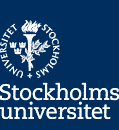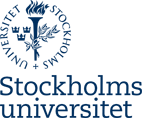Sovjet-Estlands globalisering: icke-statliga aktörer på en framväxande nordisk-baltisk marknad
I den historiska forskningen om Sovjetunionen har perestrojkaåren främst diskuterats ur ett nationellt perspektiv som en utdragen kamp mellan centralmakten och periferin som slutligen ledde till Sovjetstatens sönderfall. Däremot har få studier uppmärksammat den ekonomiska globaliseringsprocessen som tog fart efter Moskvas beslut att öppna upp den slutna sovjetiska ekonomin och att decentralisera utrikeshandeln. Som ett laboratorium för ekonomiska reformer intog Estland en särställning, inte minst då utrikeshandelns framtid diskuterades i samband med den sovjetestniska regeringens krav på ekonomiskt självstyre. I föredraget diskuteras Sovjet-Estlands inriktning på den nordiska marknaden och hur icke-statliga aktörer lade grunden för Sveriges utveckling till att bli Estlands viktigaste ekonomiska partner efter återställandet av självständigheten i augusti 1991.
I den historiska forskningen om Sovjetunionen har perestrojkaåren främst diskuterats ur ett nationellt perspektiv som en utdragen kamp mellan centralmakten och periferin som slutligen ledde till Sovjetstatens sönderfall. Däremot har få studier uppmärksammat den ekonomiska globaliseringsprocessen som tog fart efter Moskvas beslut att öppna upp den slutna sovjetiska ekonomin och att decentralisera utrikeshandeln. Som ett laboratorium för ekonomiska reformer intog Estland en särställning, inte minst då utrikeshandelns framtid diskuterades i samband med den sovjetestniska regeringens krav på ekonomiskt självstyre. I föredraget diskuteras Sovjet-Estlands inriktning på den nordiska marknaden och hur icke-statliga aktörer lade grunden för Sveriges utveckling till att bli Estlands viktigaste ekonomiska partner efter återställandet av självständigheten i augusti 1991.
Soviet Estonia’s globalization: Non-state actors on a nascent Nordic-Baltic market
In the literature on the history of the Soviet Union, the perestroika era has been predominantly framed as an intra-Soviet tug-of-war between the central government and the periphery, which eventually led to the dissolution of the union state. Only few studies have focused on the economic globalization process that followed Moscow’s decision to open
up the closed national economy and to decentralize foreign trade. The Estonian SSR occupied a key position in the reform process as a laboratory of economic experiments, where the debate about the future of foreign trade merged with the Soviet Estonian leadership’s demand for economic autonomy. The presentation discusses Soviet Estonia’s orientation towards the Nordic market and the role played by non-governmental actors in setting the ground for Sweden’s development into Estonia’s main economic partner after the restoration of independence in August 1991.
In the literature on the history of the Soviet Union, the perestroika era has been predominantly framed as an intra-Soviet tug-of-war between the central government and the periphery, which eventually led to the dissolution of the union state. Only few studies have focused on the economic globalization process that followed Moscow’s decision to open
up the closed national economy and to decentralize foreign trade. The Estonian SSR occupied a key position in the reform process as a laboratory of economic experiments, where the debate about the future of foreign trade merged with the Soviet Estonian leadership’s demand for economic autonomy. The presentation discusses Soviet Estonia’s orientation towards the Nordic market and the role played by non-governmental actors in setting the ground for Sweden’s development into Estonia’s main economic partner after the restoration of independence in August 1991.






